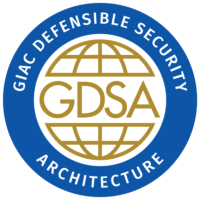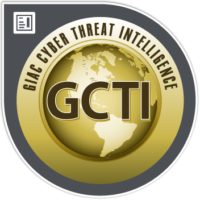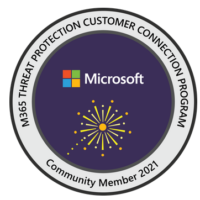Feb 20, 2023
Posted in blog, certification, Featured, Information Security
Recently, I challenged the GIAC/SANS GDSA exam. And I am excited to say, I passed and have obtained the GDSA certificate!
The course and exam concepts were a mix of things known to many experience cybersecurity professionals. While, at the same time, many new trending topics that a large portion of businesses are pushing towards (Zero Trust). There are many fun labs that challenge you to break into routers in very simple ways. The purpose of these types of challenges is to start thinking about of defenses that can be built to overcome weaknesses. On top of that, it sets a standard to always implement best security practices and keep them in mind for any architectural designs.
SEC530: Defensible Security Architecture and Engineering class
I had taken the full course related to this certification. If you want to read my review of the corresponding course, then check this blog post out –> https://www.stealthbay.com/sec530-defensible-security-architecture-and-engineering/
Prepping for the exam
Read More About This Post
Mar 27, 2022
Posted in blog, certification, Featured, forensics, Information Security
Recently, I challenged the GIAC/SANS GCTI exam. And I am excited to say I passed and have obtained the GCTI certificate!!!
The concepts for this course were much newer to me. Threat modelling, researching, and building a threat intelligence tech stack was amazing to learn. Usually, a threat intel program is conducted with very established and mature security programs. So, this is an area I have not seen too many people often get into. However, Threat Intel programs are slowly becoming more common. and knowing your adversary, as well as keeping track of an adversary that could potentially be targeting you is an awesome skill set to accomplish.
FOR578: Cyber Threat Intelligence class
I had taken the full course on threat intelligence. If you want to read my review of it check this blog post out –> https://www.stealthbay.com/a-review-of-for578-cyber-threat-intelligence/
Prepping for the exam
I highly advise everyone take the FOR578: Cyber Threat Intelligence course. You can get more details from here: https://www.sans.org/cyber-security-courses/cyber-threat-intelligence/
The course will prepare you for the exam and cover topics and tools that you will be tested on. There is a lot of material to learn in the course. So, dedicate a good amount of time towards learning the course material and all the concepts. The class was a huge learning experience in the world of Threat Intelligence.
After you take the course try going back to each book and building your index. After this, it is a good time to use up practice exam 1 and see how you fair in it. Use the section at the end, which lists out which sections you were weak in and go study them some more. Take practice exam 2 and hopefully this time you see an improvement. If so, then book your final exam within the next 2-5 days and go for it. This format always has worked well for me.
Making an Index
Read More Of ThiS Post














 My name is Harry Taheem
I am a Cyber Security Engineer.
My aim is to post things I learn or find interesting and allow others to hopefully gain some more insight. I also plan on posting general IT related issues, as I’d like
My name is Harry Taheem
I am a Cyber Security Engineer.
My aim is to post things I learn or find interesting and allow others to hopefully gain some more insight. I also plan on posting general IT related issues, as I’d like 